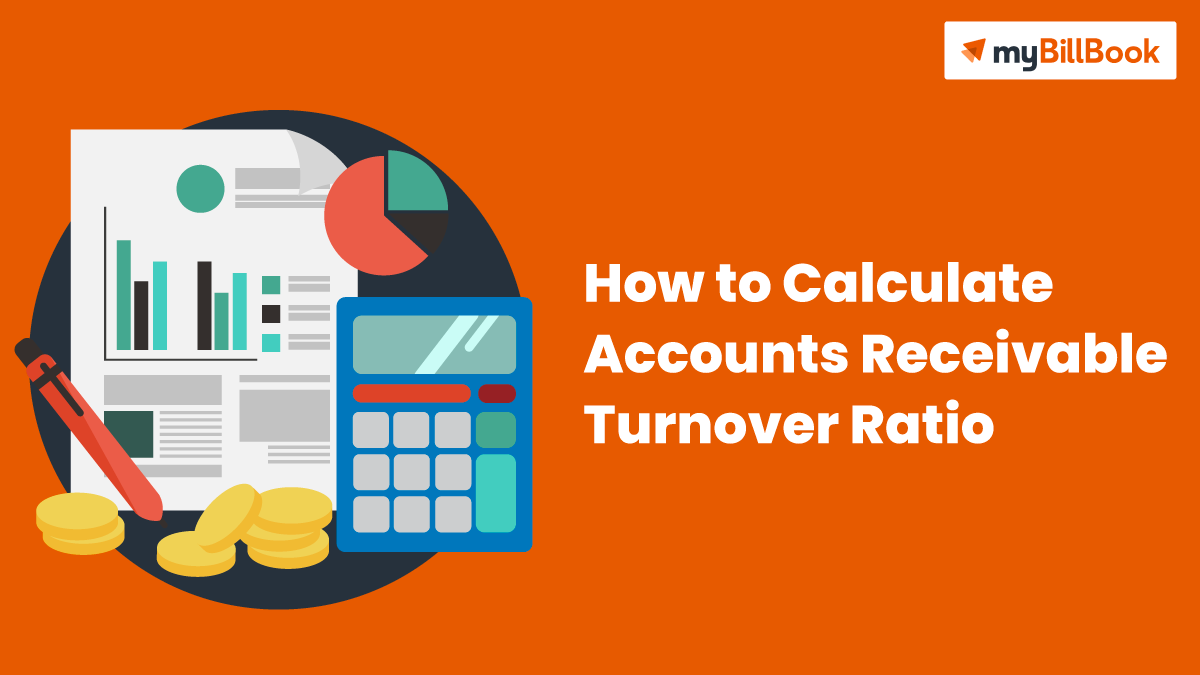Debtors Turnover Ratio Formula
No business can afford to conduct all transactions in cash; thus, making credit available to clients is a requirement. But collecting book debts quickly and within the credit period is vital. If this is not done, debt becoming unaffordable will increase. So, what is the effectiveness and quality of a company’s credit collection operations? To address this question, a company’s Debtors turnover ratio is examined.
What Does The Debtor Turnover Ratio Mean?
In business, the debtor turnover ratio is also called Receivables’ Turnover Ratio.
Due to the delay in revenue realisation, receivables are formed when a business offers products on credit. Later on, these receivables are converted to cash. Therefore, the rate at which receivables are recovered directly affects the business’s liquidity condition.
The Debtors’ turnover ratio provides insight into a business’s collection and credit strategies. It measures how effectively a company’s management controls its receivables.
It establishes the rationality of the company’s debtors’ resources and the efficiency with which the company converts debtors to cash. In other terms, it measures how quickly debtors are paid off.
It is an important indicator of a firm’s financial and operational integrity. It can determine whether a company is experiencing difficulties collecting on credit sales.
The Formula for Calculating Debtors’ Turnover Ratio
The turnover ratio of debtors is computed as the ratio of net credit sales to the average trade debtors. This ratio is specified in terms of times.
Debtors Turnover ratio formula = Net credit sales / Avg AR
Credit sales are the total amount of goods or services sold or supplied on credit by a business to its consumers. These figures are exclusive of any returns or trade discounts.
Average accounts receivable is computed by dividing the sum of beginning and ending receivables for a specified period (usually monthly, quarterly, or annually) by two. Debtors & bills receivables are both included in the category of accounts receivable. They are the amounts customers owe for items sold, services provided, or contractual obligations.
It is critical to remember that when calculating this ratio, allowances for doubtful debts are not excluded from total debtors or accounts receivables to avoid the perception of a larger collection of receivables.
The trade receivables turnover ratio is often used in financial modelling to forecast the balance sheet. The accounts receivable balance is calculated from the average time (days) in which revenue is expected to be received. To calculate the AR balance for each period, revenue is multiplied by turnover days and then divided by the number of days.
The higher the turnover of debtors, the more effectively the firm manages its credit.
An example of debtors’ turnover ratio
Consider the following scenario a company has total sales of Rs 5,00,000, of which Rs 3,50,000 are credit sales. Account receivables have an opening balance value of Rs 3,00,000 and a closing balance value of Rs 1,00,000 after the financial year. Therefore, the debtor’s turnover ratio will be as follows
Debtors Turnover Ratio = 3,50,000/2,00,000 = 1.75 times
Credit sales total = 3,50,000
Average AR = (3,00,000+1,00,000) /2 =2,00,000
High and Low Debtor Turnover Ratio
A high ratio could suggest
- Customers are permitted a short collection period.
- The business may run primarily on a cash basis.
- The company’s accounts receivable collection process is efficient.
- A high proportion of individuals pay off their debts promptly
- The corporation is conservative when it comes to credit extension.
A low ratio could suggest
- Customers are permitted a prolonged collection period.
- The company has a long credit period with its suppliers, which helps it pay its bills on time.
- High-value cash receivables may be owed to the business.
Why Should You Monitor Accounts Receivable Turnover?
As you are probably aware, the accounts receivable turnover ratio indicates how frequently clients pay invoices due during the year. The higher the percentage, effectively your financial department collects money owed to your organisation. It’s a simple computation based on the tracking period’s net credit sales divided by the average AR. The average accounts receivable balance equals the sum of the AR balances at the start and end of the month divided by two. This computation should be simple enough to complete on a small portable calculator.
Average Debtor Collection Period and How to Calculate It?
An account’s average collection period is the number of days it takes on average to get the money back. It means the average number of days required for a business to convert its receivables to cash. This ratio also called days sales outstanding (DSO), is a common name for the receivables turnover ratio. The average collection period is often referred to as the Receivables (Debtor) velocity.
(i) The following formula is used to determine the Average Collection Period
Average Collection Period = Average Accounts Receivable or Average Debtors / Average Daily Credit Sales.
(ii) If the debtor’s turnover ratio is stated in terms of days, then the average collection period may be determined easily using the following formula
Average Collection Period = 365 days / Debtors Turnover Ratio
The lower the frequency, the better the position is going to be. A shortened collection period indicates prompt debtor payment, while a prolonged collection period indicates excessively generous credit terms and ineffective credit collection performance.
Advantages Of Debtor’s Turnover Ratio In Financial Report
It’s beneficial for the following
- Cash flow forecasting
- Recognising inefficient billing practices
- Your credit policy should be reevaluated.
- Maintaining the effectiveness of your credit policies.
- Customer screening guidelines are effective.
- Accuracy of invoicing.
- Efficacy of the dunning process.
- Deductible preventative initiatives
The Importance of the Debtor’s Turnover Ratio
This is a liquidity ratio combined with a high trade receivables turnover ratio, indicating improved liquidity. As a result, it assists creditors in determining whether the company will be able to pay the bills on time.
- Using this ratio, both employees and lenders may get a clear picture of the business’s financial health.
- It also assists sales managers in forecasting future sales.
- It is also beneficial in setting the organisation’s credit policy. The management may choose to grant a short-term credit facility to its clients to increase the organisation’s liquidity.
- Financial modelling also makes use of the trade receivables turnover ratio. It is used to generate budget projections and preliminary balance sheet figures. This ratio can estimate the number of accounts receivable or other debtors.
Maximise Your Debtor Turnover Ratio
If your account receivable turnover ratio is too low, you likely need to modify your credit and collection rules and practices. Here are the five best ways to maximise your ratio
- Invoice in a timely and appropriate manner.
- Clearly state the terms of payment.
- Accept a variety of payment methods.
- Create follow-up reminders for yourself.
- Consider providing cash and prepayment discounts.
Conclusion
When calculating a company’s debtors’ turnover ratio, it considers how quickly it collects outstanding cash amounts from its customers. Therefore, a high ratio is beneficial since it suggests frequent and efficient credit collection. Otherwise, a low receivables turnover ratio may indicate an unstable collection mechanism, inadequate credit guidelines, or customers that aren’t creditworthy.
The presence of a high ratio suggests a conservative credit strategy, whilst a low ratio shows the presence of liberal lending terms. A company’s credit policy should be neither overly liberal nor very restrictive. The former will lead to an increase in fund blockages and bad debts, whereas the latter will result in decreased sales, ultimately resulting in a decrease in profits.
Yes, the debtor’s turnover ratio can be quite useful in preparing a forecast budget because it can aid in the estimation of debtors, sales, and cash flows for the upcoming period. After a particular period, the average debtors can be calculated by adding the debtor's opening and closing balances and dividing the total by two. When a company gives its customers credit, it gives them a trade discount or refunds money back if they don't like the deal. This is called "net credit sales." It shows that the business can recover receivables from customers at the right time, has increased liquidity and the ability to meet obligations, and offers its customers a conservative and short-term credit period. A business's receivables or turnover ratio should be high. However, if the credit terms are excessively severe, it can have a negative effect on sales, and a higher ratio is also not beneficial to the business in the long run. If accounts receivable increases faster than sales, the ratio decreases. A decreasing ratio is mostly caused by changes in the company's credit strategy and growing difficulties collecting receivables on schedule. The Receivable Turnover Ratio, also referred to as the Debtor's Turnover Ratio is an accounting metric used to determine a company's effectiveness in extending credit and collecting debts. The trade receivables ratio is a ratio of activity that indicates how effectively a business utilises its assets.Frequently Asked Questions
Is it possible to budget using the debtor's turnover ratio?
How do I determine the average number of debtors or receivables?
What is a net credit sale?
What does a high debtor’s turnover ratio imply?
Is a high turnover ratio of receivables always beneficial?
What are the factors that influence the trade receivables turnover ratio?
What function does the debtor’s turnover ratio serve?
Read more:







